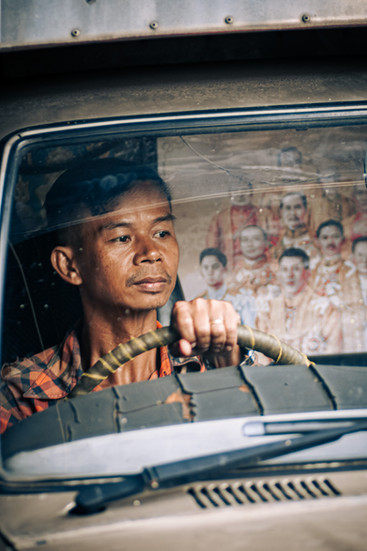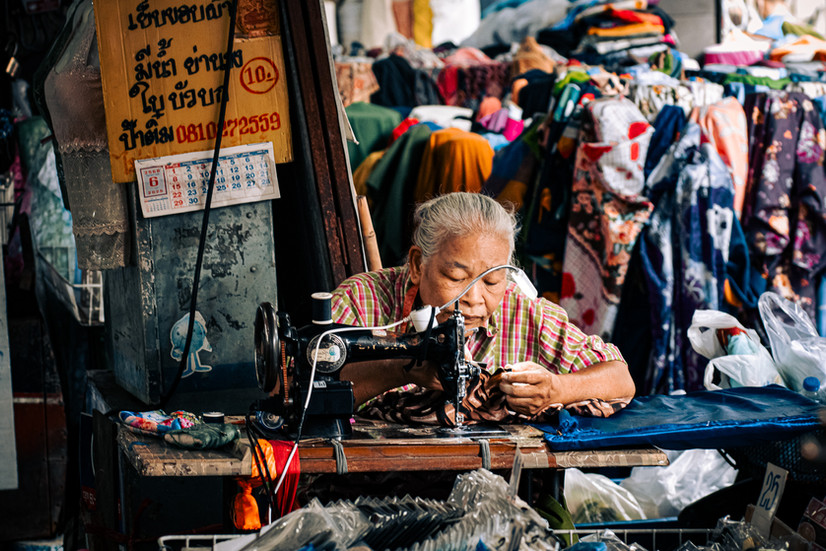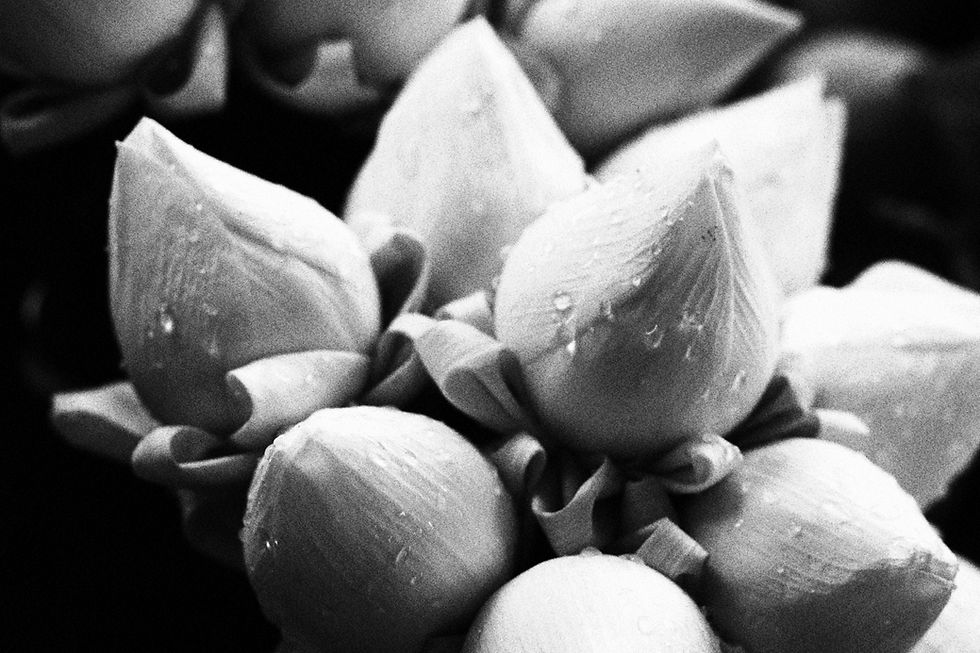A Walk Through Warorot Market: Where Plastic Limbs and Living Souls Collide
- Tatiana Mocchetti
- Jun 12
- 4 min read
II went to Warorot Market with a simple goal: buy a few essentials. But as any photographer knows, you never really walk through this place without your camera—and without being swept into a world that demands to be captured. What started as a mundane errand turned into a compelling stroll through layers of life, fragments of forgotten objects, and the kind of street moments that whisper stories if you’re willing to listen.
This post is about letting your camera lead the way, embracing the unexpected, and how even plastic mannequins and rusted vehicles can spark creative fire. And maybe, it’s also about staying open to the invisible threads that connect still objects to living moments.
Parking Lot Surprises: The Mannequin Head
Before I even entered the market, the parking lot stopped me. A pile of metal scraps sat heaped in a corner, silent and unnoticed by the passersby—except for the mannequin head perched right on top. Balanced there like a forgotten queen of junk, it stared blankly into the heat. It was absurd. Strange. Beautiful. I clicked.
Sometimes photography begins before your feet even leave the car. That’s what I love about street photography—you don’t chase beauty, you recognize it when it quietly stares back at you from atop a pile of scrap. That moment reminded me how objects can hold their own kind of gaze—a mute, haunting one that almost demands you stop and respond.

Into the Shop: Limbs Without Bodies
Inside the shop, the oddness continued. Disjointed mannequins scattered about—arms, torsos, some upright, others leaning against shelves like they’d grown tired of modeling. Their blank expressions and still forms created an eerie contrast with the bustling energy of the shopkeepers and customers moving between them.
There was something almost poetic in that contrast—motion and stillness, flesh and plastic. I photographed an arm resting near a sewing machine. Another hung from a hook above. They weren’t props; they were part of the narrative.
As I moved through the space, I began to see them less as disjointed mannequins and more as silent actors in an abstract play. Their stillness pushed me to find emotion in angles, to build connection through composition. These weren’t just objects, they were a study in form and fragmentation.
Into the Alleys: Conversations and Moments
Warorot’s back alleys are where stories breathe. I met an elderly woman sewing clothes near the curb, her machine humming steadily. Her face was calm, almost meditative. We exchanged smiles and a few words. Then I saw another woman hunched over worn shoes, fixing soles with weathered hands. Both women were creators—repairing, sewing, restoring.
I love moments like these. The camera becomes an excuse to pause, to exchange more than glances. You don’t just collect images—you collect exchanges, fragments of someone else’s day.
In those alleys, every face seemed to carry a novel’s worth of stories. A boy watched me curiously as I photographed the woman with her sewing machine. A monk passed quietly behind me. Even the rhythm of the alley—voices, footsteps, the occasional clinking of metal—wove itself into the visual story. It’s in those shared spaces that photography becomes communion.
Forgotten Vehicles and Urban Decay
Further into the alleys, two vehicles caught my eye. One was an old truck, abandoned, its windows broken and its cabin overtaken by dust and silence. I peered inside and felt like I was entering a time capsule.
The second was a pickup truck left to rust. Nature had begun reclaiming it—vines creeping through the open window, plants sprouting where passengers once sat. I took my time. Adjusted the aperture on my 85mm. Click.
There’s beauty in decay, especially when nature begins to weave herself back into manmade things. These scenes are slow stories—quiet but rich.
I lingered at the scene longer than expected. The contrast between rusted metal and green life felt almost hopeful—like resilience painted in still life. It reminded me that what we discard still has something to say, and nature is always listening.



Crossing Paths with Monks
Then came the red.
A burst of crimson in my peripheral vision turned my attention to a monk walking with unmistakable purpose through the crowd. His robe, bold and vivid, swayed with each step. But it wasn’t just his robe—it was his entire presence. Tattooed skin peeking through folds of fabric, eyes soft but focused. I asked to take his portrait, and he smiled.
I crossed paths with several monks that morning—some weaving through crowds with alms bowls, others strolling with plastic bags in hand. Each one, a contrast of discipline and daily life. The vibrant orange and reds of their robes against the dusty greys and blues of Warorot’s streets made every frame a conversation in color and spirit.
In one alley, I followed a monk from behind as he walked quietly under tangled wires and half-lit shop signs. That frame stayed with me. A solitary figure wrapped in tradition, moving forward under layers of modern mess.
The way monks inhabit a space feels both grounded and untouchable. Their presence is a reminder—of balance, of rhythm, of seeing what truly matters. And through the lens, it became more than a photograph. It became a lesson.
Warorot Market isn’t just a place to shop. It’s a place where mannequins, machines, monks, and makers collide. It’s a stage for the everyday theatre of life. And when you carry your camera not as a tool but as a companion, even a quick errand becomes an adventure.
So next time you go out with a list in your pocket, take your camera. Let the market surprise you. Stay open to humor, decay, texture, and silence. Let each frame hold a trace of your wonder.
As Dorothea Lange once said, “The camera is an instrument that teaches people how to see without a camera.”



































Comments